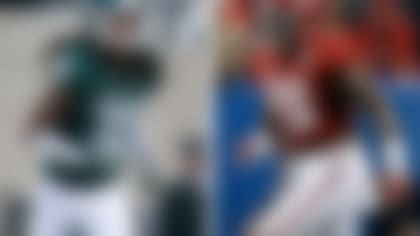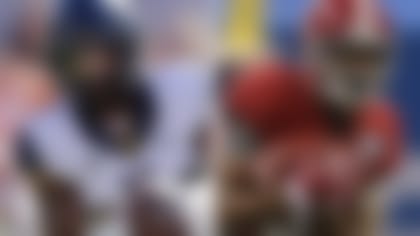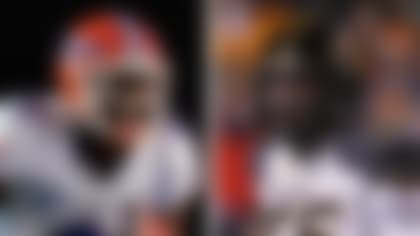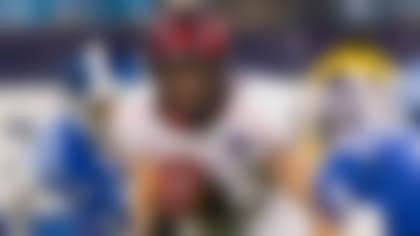Top outside linebackers
</center>
We've covered hybrid outside linebackers/defensive ends, but here are the three best pure outside linebackers in this year's draft:
1. Aaron Curry, Wake Forest (6-2, 254):
Curry, who can go inside but primarily plays outside, is the cleanest linebacker in the draft and should be taken among the top five picks -– possibly even first. He is a three-down linebacker who is effective in pass coverage.
Landing spots: Detroit, St. Louis, Kansas City or Cleveland, which hold four of the top five picks.
2. Brian Cushing, USC (6-3, 243):
Cushing is one of the most versatile linebackers in the draft. He can play a traditional outside role or move inside in some sets but more as a rover-type linebacker. His versatility makes him highly desirable.
Landing spots: New Orleans, Washington, Houston, New England or Atlanta.
3. Clint Sintim, Virginia (6-3, 256):
Forget the hybrid stuff: Sintim is a true 3-4 outside linebacker who can rush the passer and set the edge against the run. He does the dirty work that often goes unnoticed, but he also can get to the quarterback.
Landing spots: He is a perfect fit for Miami, New England and, yes, Pittsburgh. Atlanta runs a 4-3 defense, but Sintim is on the team's radar as a possible strong-side OLB.
The dialogue was prompted by a question to an NFL team executive regarding this year's inside linebacker prospects.
"There's Rey Maualuga and…..." the executive said.
"And…."
"There's Rey Maualuga."
Feelings about NFL prospects are subjective, and this team executive might believe that USC's Maualuga is the only inside player who can fit his team's scheme. Still, Ohio State's James Laurinaitis is considered the only other possible first-round inside/middle linebacker prospect, and both him and Maualuga could be among the latter half of the first 32 picks.
The odd part of that scenario is that Maualuga and Laurinaitis were considered two of the best players in all of college football and definitely two of the best linebackers in the nation the past two years. Their talent and playmaking ability isn't being devalued, but the position -– made famous by Dick Butkus, Mike Singletary, Harry Carson, Ray Lewis and Brian Urlacher –- is.
The top linebackers in the NFL today mainly play on the outside: James Harrison, DeMarcus Ware, Terrell Suggs, Joey Porter and Lance Briggs. There are plenty of standout inside/middle linebackers –- Patrick Willis, Lewis, Urlacher, Jon Beason, Lofa Tatupu, Antonio Pierce, Bradie James and James Farrior –- but they aren't considered game-changers like many of those who played the position before them.
The style of play in the NFL has changed to where middle/inside linebackers have become run-game specialists, often being pulled for a defensive back (nickel packages) in passing situations. Offenses are spreading the field more to open up running and passing lanes by alignment, in essence turning the game into a geometrical shell game in open space.
Very few teams run the ball straight ahead between the 20-yard lines, opting for more cutback-style runs where lineman can leverage defenders and wall off enforcers such as Lewis. The need for that "thumper" at inside linebacker has been replaced by the hybrid outside linebackers/end or multi-dimensional safeties, such as Troy Polamalu, who can track receivers and blow up ball carriers.
Even some of the top inside/middle linebackers in the game today, like Willis, are considered more "chase" linebackers, who clean up after other players have stuffed holes and done much of the dirty work.
Maualuga and Laurinaitis, along with mid-round prospects Darry Beckwith, Dannell Ellerbee, Jason Phillips and Jasper Brinkley, can still be difference-makers and are valued assets. The game, at its most fundamental point, is still about running, tackling and being more physical than the opposing player. One thing hurting those mid-round prospects, are red flags, mostly medical, that teams will have to address.











